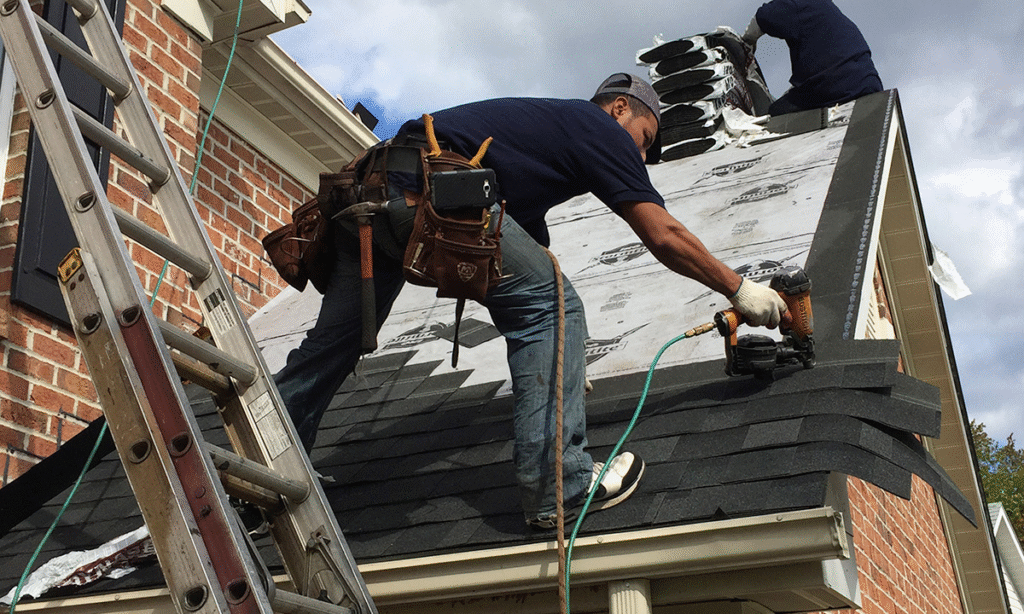Roof Repairs Made Simple: How to Spot Problems Early and Avoid Costly Fixes
Few homeowners pay much attention to their roof, until the sound of dripping water is echoing onto the kitchen bench during a storm. By then, the issue has escalated from “minor inconvenience” to “weekend-destroying crisis” quicker than you can say “where’s the bucket?
The fact is, most roofing problems can be detected and corrected before they become wallet-busting catastrophes. You just have to know where to look.

Why Roof Problems Sneak Up on People
Your roof is the unsung hero of your house. It quietly protects you from wind, rain, sun, and the occasional flying tree limb. But in contrast to walls or floors, you can’t always visually detect the damage until it’s severe.
A loose flashing or cracked tile may not be in a panic situation today. Fast-forward a few months, and you could be coping with rotting timbers, mould, or electrical damage. The difference between spending $5,000 to rebuild and $150 for a repair tends to come down to a matter of timing.
The Tell-Tale Signs Your Roof Needs Attention
Let’s get straight down to business — below are the warning signs to look out for:
- Water stains on ceilings or walls – Even a light brown spot indicates water is entering somewhere.
- Missing or cracked tiles – Cracks are an open door for leaks.
- Rust spots on metal roofing – Cracks are an open door for leaks.
- Sagging areas – May indicate structural weakness or excess water buildup.
- Gutter overflow – Clogged or damaged gutters can direct water into areas it shouldn’t.
Consider these signs as the SOS of your roof. Disregard them, and the repair cost will only increase.
Suburb-Specific Roofing Challenges
Not every roof has the same fight. Weather, terrain, and regional styles of construction play a significant role.
Consider the roofers in Raymond Terrace, for instance. The region is not unfamiliar with heavy rain and high humidity, which can cause moss and lichen to grow on tiles faster. That may not seem so bad on the surface, but that moisture gets trapped in the moss, causing tiles to deteriorate over time.
Compare that with houses near the coast — salt in the air can rot metal roofs much quicker. In older suburbs such as Balmain, heritage building regulations might restrict what materials or colours you can utilise, bringing another whole layer of choice into play.
In short: where you live determines how you look after your roof.
The DIY Temptation (and Its Risks)
Plenty of Aussies are handy with a hammer, and there’s no shortage of online tutorials promising you can fix your roof yourself. But roofing isn’t like painting a fence — one wrong step can cause more harm than good.
A few reasons DIY can backfire:
- Walking on fragile tiles can crack them.
- Improperly fitted flashing can direct water into your roof cavity.
- Safety hazards are very real — one slip can end with a trip to the hospital.
If you’ve ever seen someone patch a leak with duct tape, you know not all “fixes” are created equal.
How Often Should You Check Your Roof?
You don’t need to be up there every weekend, but a visual inspection twice a year is a smart move — once in spring and once before the stormy season.
Here’s a quick at-home checklist:
- Use binoculars from the ground to scan for missing or damaged sections.
- Look inside your roof space for light streaming in or signs of water.
- After heavy rain, check ceilings and upper walls for new stains.
If you spot anything odd, it’s worth having a professional take a closer look. A quick check-up today beats a surprise repair later.
Real-Life Example: The Leak That Grew Legs
My friend in Newcastle dismissed a tiny water mark on their lounge room ceiling. “It’s probably nothing,” they told me. Three months later, a fierce storm rolled in, and they awoke to water coming in like a tap being left on. The reason? A split ridge tile that might have been replaced for under the cost of dinner out.
Instead, they spent money on tile replacement, insulation repair, and painting. Total cost: several thousand dollars. Moral of the story? Small problems don’t remain small.
Roofing Materials and Their Lifespans
Understanding your roof’s material can help you predict maintenance needs.
- Terracotta tiles – Can last over 50 years but are prone to moss growth in damp areas.
- Concrete tiles – Durable but can crack under heavy impact.
- Colorbond steel – Long-lasting and great for bushfire zones, but coastal homes must watch for salt corrosion.
- Slate – Beautiful and durable, but expensive to repair.
If you’re unsure what you’ve got, a quick chat with a local expert — even if it’s just for advice — can be enlightening.
Prevention Is Always Cheaper
Think of roof maintenance as regular car maintenance. You wouldn’t let your engine overheat before you checked the oil. A quick inspection, a bit of cleaning, and minor repairs keep you on the road.
In roofing terminology, prevention can mean:
- Clearing gutters prior to storm season.
- Trimming branches that extend over the roof and may shed debris.
- Replacing several tiles rather than allowing leaks to extend.
These small tasks extend your roof’s life by years.
Why Local Knowledge Matters
Although this is not an advertisement, it’s also worth noting that local knowledge can take you far. A company like Newbrice Roofing will know the local weather conditions, typical trouble areas, and council regulations. That information can be time- and money-saving even if you’re only looking for a pro’s opinion.
It’s the same as wanting to know the best bait from a local fisherman — local experience makes a difference.
Your Next Steps as a Homeowner
You don’t need to climb up there with a toolbelt and a prayer. But you should make a plan:
- Inspect regularly – Spring and pre-storm season are best.
- Act fast – Don’t ignore signs of damage.
- Get expert advice – Especially for older or heritage homes.
- Budget for maintenance – A small annual allowance beats an emergency loan.
Your roof works 24/7, through every weather mood swing Australia can throw at it. Treat it with a bit of respect, and it’ll return the favour.Final Thought: Roof care isn’t glamorous. You’ll never host a dinner party showing off your “well-maintained flashing.” But the peace of mind knowing your home is dry, safe, and protected? That’s priceless.









